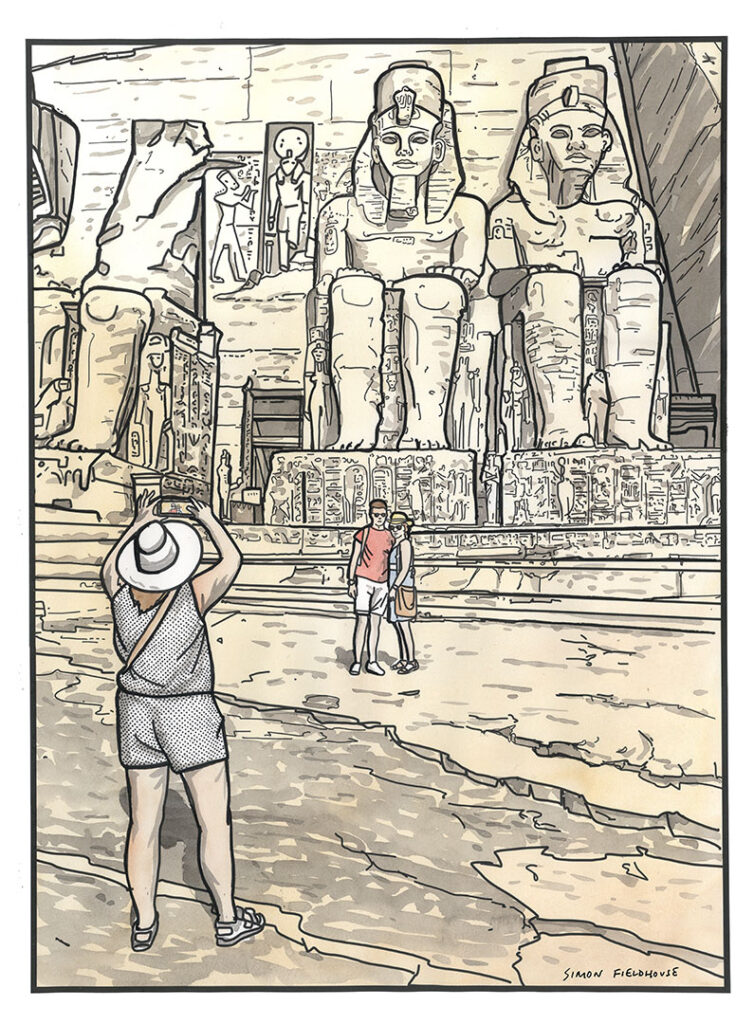
Abu Simbel - Egypt
The statues of Pharaoh Ramesses II at Abu Simbel in Egypt stand as an enduring testament to both the grandeur of ancient Egyptian civilization and the remarkable legacy of one of its most illustrious rulers. Carved into the sandstone cliffs on the west bank of the Nile, these colossal statues, with their awe-inspiring presence, have captivated the imagination of countless visitors and scholars for centuries.
The twin temples of Abu Simbel were commissioned by Ramesses II in the 13th century BCE, during the height of the New Kingdom period. Dedicated to the deities Ra-Horakhty, Ptah, Amun, and Ramesses himself, these temples were not merely structures but were designed to convey the pharaoh's power and divine status to all who beheld them.
The most striking features of the Abu Simbel temples are the four colossal statues of Ramesses II that guard the entrance to the larger temple. Each statue stands at a towering height of over 65 feet, depicting the pharaoh in a seated position, gazing out across the desert landscape with an air of majestic authority. The meticulous detailing of the statues, from the intricate facial features to the finely crafted regal attire, reflects the unparalleled skill and artistry of ancient Egyptian sculptors.
What makes these statues particularly remarkable is not just their size and craftsmanship but also the strategic placement within the temple complex. The alignment of the statues was ingeniously planned so that twice a year, during the solar phenomena known as the "Sun Festival," sunlight penetrates the temple's inner sanctuary, illuminating the figures seated at the farthest end, including three statues of the gods and one of Ramesses II himself. This celestial alignment was a deliberate architectural feat, symbolizing the pharaoh's connection with the divine and the eternal.
Moreover, the relocation of the Abu Simbel temples in the 1960s stands as a monumental achievement in the history of preservation. Threatened by the construction of the Aswan High Dam and the subsequent flooding of the Nile, an international effort led by UNESCO saw the temples meticulously dismantled and relocated to higher ground, safeguarding these invaluable historical treasures for future generations.
Beyond their architectural significance, the statues of Ramesses II at Abu Simbel serve as a testament to the pharaoh's legacy as a formidable leader. Ramesses II, also known as Ramesses the Great, ruled for over six decades and left an indelible mark on Egypt's history through military conquests, monumental construction projects, and diplomatic endeavors. His reign witnessed a flourishing of art, culture, and architecture, and the temples at Abu Simbel stand as enduring symbols of his reign's splendor and the grandeur of ancient Egypt.
The statues of Pharaoh Ramesses II at Abu Simbel epitomize the remarkable achievements of ancient Egyptian civilization. Their colossal presence, intricate craftsmanship, celestial symbolism, and historical significance make them a quintessential representation of Egypt's rich cultural heritage and the enduring legacy of one of its most celebrated pharaohs. These statues continue to stand as a testament to the brilliance of ancient Egyptian artistry and the enduring power of human ingenuity across the ages.